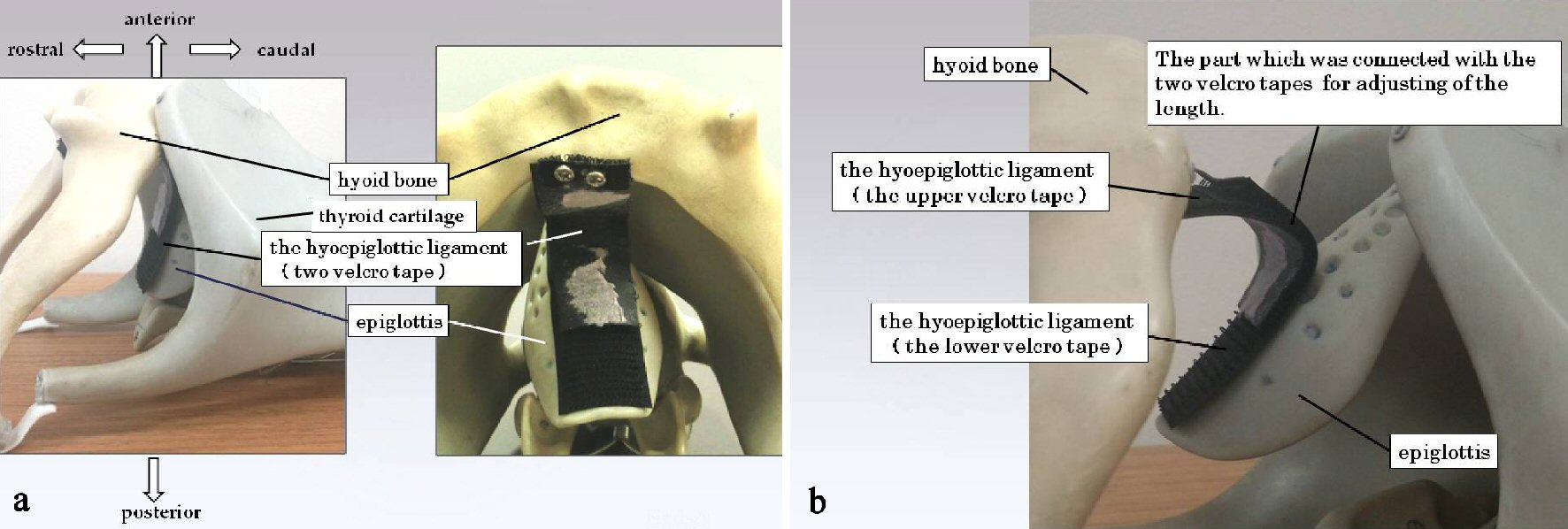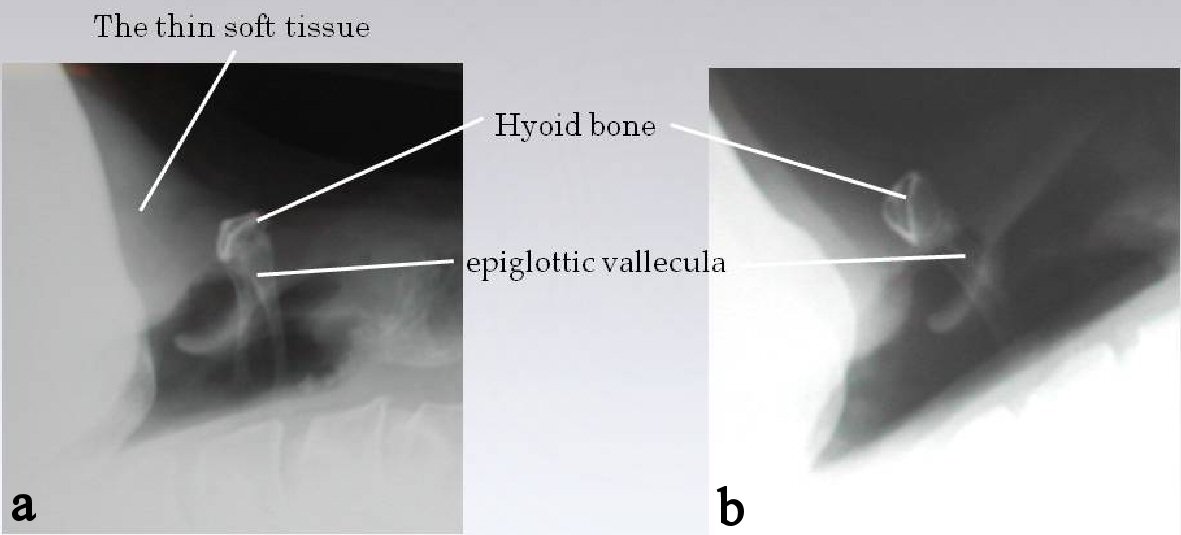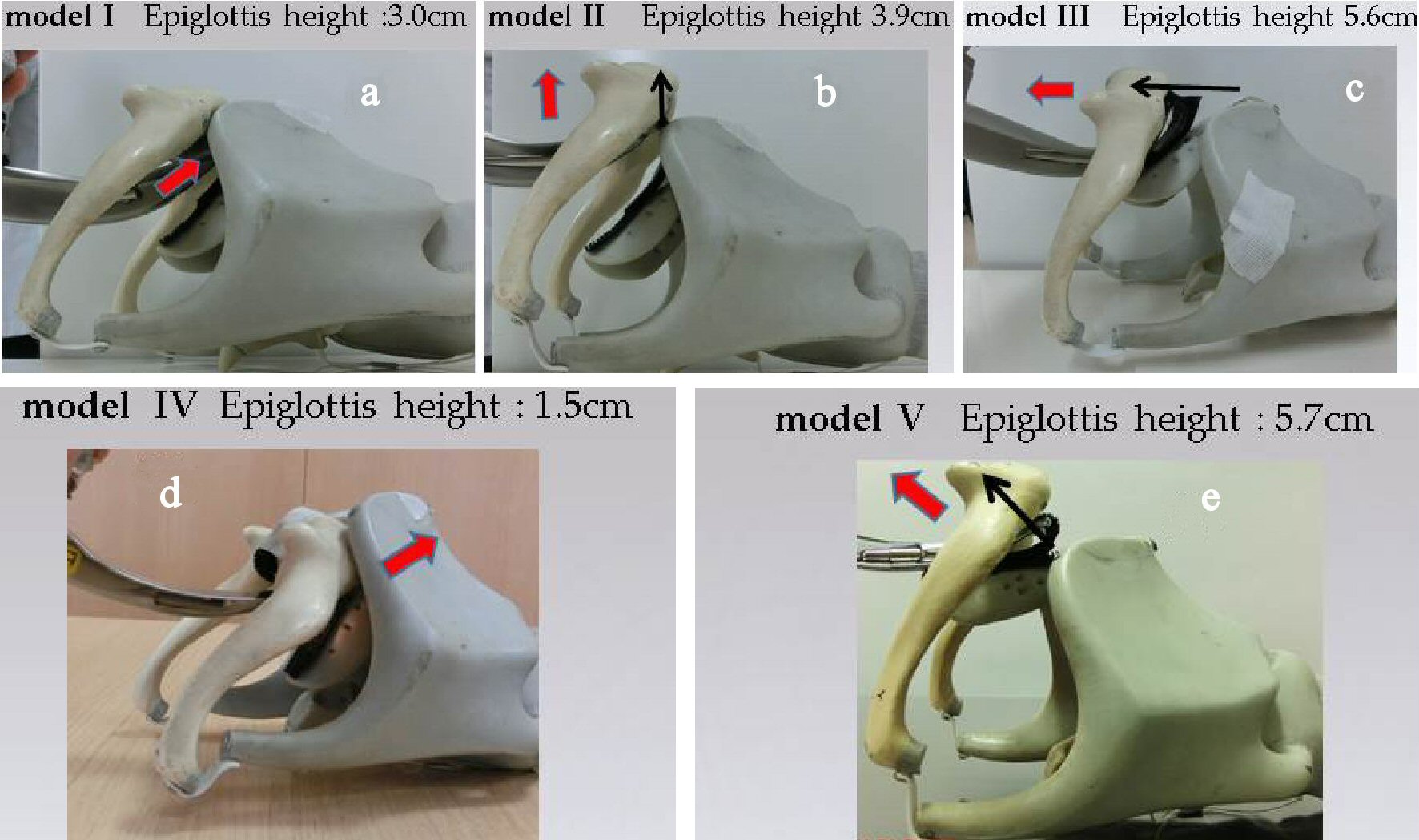
Figure 1. The larynx model for intubation. This larynx model comprises parts representing the thyroid cartilage, hyoid bone, epiglottis and hyoepiglottic ligament. The epiglottis is connected with the hyoid bone via the hyoepiglottic ligament. The epiglottis can be elevated by depression of the hyoepiglottic ligament, according to its anatomical structure (a). In this model, the hyoepiglottic ligament is made of a Velcro tape, the length of which can be adjusted (b).

Figure 2. X-ray images of the anatomical positions of the hyoid bone and hyoepiglottic ligament in patients with poor and normal laryngeal exposure. X-ray image from a patient with a poor laryngeal exposure (a). In this patient, the hyoid bone is located caudal to the epiglottic vallecula and the soft tissue under the lower jaw is thick. In many cases the location of the hyoid bone is rostral to the epiglottic vallecula and laryngeal exposure is normal (b).

Figure 3. Larynx models showing movement of the hyoid bone and epiglottis. This figure shows a representative image of the maneuver applied to each of the five models. A thick red arrow indicates the direction of force applied through the laryngoscope tip and a small black arrow indicates the direction of movement of the hyoid bone. For each model, the height of the epiglottis above the table surface is described. The epiglottic vallecula is located caudal to the hyoid bone in models I, II, III and V. In model IV the hyoid bone is caudal to the epiglottic vallecula. Prior to each maneuver the epiglottis was 1.5 cm above the desk. (a) Model I (Macintosh maneuver). The distance between the thyroid cartilage and the hyoid bone was reduced and the thyroid cartilage was at the same level as the hyoid bone. The epiglottis was 2.9 cm above the desk (partial elevation). The hyoid bone was not displaced. (b) Model II (modified Macintosh maneuver). The distance between the thyroid cartilage and hyoid bone was reduced, but the hyoid bone was displaced anteriorly. The epiglottis was 3.9 cm above the desk (partial elevation). (c) Model III (the McCoy maneuver). The thyroid cartilage was a little higher than the hyoid bone. The epiglottis was 5.6 cm above the desk. Displacement of the hyoid bone was in a rostral direction. (d) Model IV (caudal hyoid bone). Prior to the maneuver the location of the hyoid bone was more caudal than in model I. When the maneuver was applied, the epiglottis could not be lifted and remained 1.5 cm above the desk. This is the same height as when no force was applied. The position of the hyoid bone did not change. (e) Model V (the modified maneuver). The hyoid bone was higher than the thyroid cartilage and displaced anteriorly and rostrally. The epiglottis was 5.8 cm above the desk.


